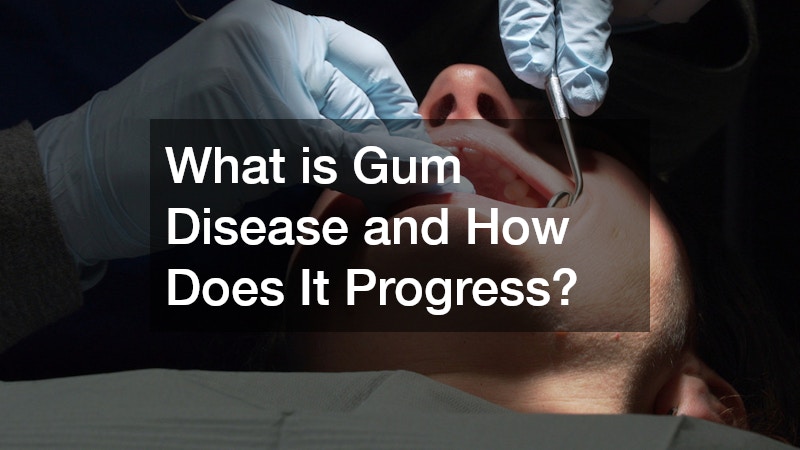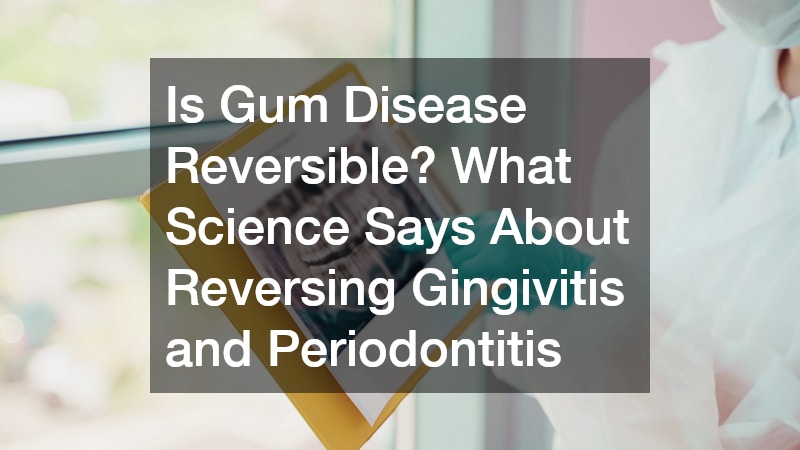Gum disease is more common than most people think—and it’s not just about bleeding gums or bad breath. Left unchecked, it can lead to serious oral health problems, including tooth loss and bone damage. But one question often arises among health-conscious individuals: Is gum disease reversible? The answer depends largely on the stage of the disease and how early it is detected. With proper care and treatment, many people can reverse the early signs of gum disease and prevent it from progressing into something more severe.
In this article, we’ll explore what science says about the reversibility of gum disease, the difference between gingivitis and periodontitis, and what practical steps you can take to protect your oral health.
What is Gum Disease and How Does It Progress?

Before diving into whether gum disease can be reversed, it’s important to understand what it is and how it develops. Gum disease, or periodontal disease, is an inflammatory condition that affects the gums and surrounding tissues of the teeth. It is usually caused by a buildup of plaque, a sticky film of bacteria that forms on teeth and gums.
There are two main gum disease stages:
- Gingivitis: This is the earliest stage and is usually caused by poor oral hygiene. Symptoms include red, swollen gums that may bleed when brushing or flossing. Gingivitis is completely reversible with good dental care.
- Periodontitis: If gingivitis is left untreated, it can advance to periodontitis. At this stage, the inner layer of the gum and bone pull away from the teeth. The pockets formed collect debris and become infected. Bone and tissue damage can occur, and this stage is much harder to reverse.
Understanding these stages is crucial in determining the course of treatment and the likelihood of reversing the disease.
Is Gum Disease Reversible? The Scientific Verdict
Science supports the idea that gum disease is reversible, but only under certain conditions. Specifically, gingivitis can be completely reversed with proper oral hygiene and lifestyle changes. However, once the disease progresses to periodontitis, full reversal becomes difficult, though it can be managed and controlled.
What Makes Gingivitis Reversible?
- No permanent damage: In gingivitis, the infection hasn’t yet caused permanent damage to the bone or connective tissue.
- Responds to care: With brushing, flossing, and professional cleanings, the inflammation can subside.
- Lifestyle factors: Reducing sugar intake, quitting smoking, and managing stress can support healing.
Why Periodontitis Is Harder to Reverse
- Tissue loss: Periodontitis involves damage to bone and ligaments that can’t regenerate easily.
- Requires advanced care: Deep cleaning (scaling and root planing), medications, or even surgery may be necessary.
- Ongoing management: While not fully reversible, periodontitis can be kept under control with long-term care.
Signs Your Gum Disease May Be Reversible
Recognizing symptoms early is key to reversing gum disease. Here are signs that your condition is still in the gingivitis stage:
- Gums that are red or swollen
- Bleeding when brushing or flossing
- Bad breath that doesn’t go away
- Mild gum tenderness without severe pain
If you’re experiencing these signs, take action immediately. The earlier you intervene, the better your chances of reversing the condition.
How to Reverse Gingivitis Naturally and Effectively
If you’re in the early stages of gum disease, the good news is that you can take proactive steps to reverse it naturally, many of which you can start today.
Daily Oral Hygiene Habits
- Brush twice a day with a fluoride toothpaste.
- Floss every day to remove plaque between teeth.
- Reduce bacteria buildup by using an effective antibacterial mouthwash.
Lifestyle Changes
- Eat a balanced diet rich in vitamins C and D for gum health.
- Quit smoking, as it restricts blood flow to the gums.
- Manage stress, which can weaken your immune response.
Professional Dental Care
- Schedule regular cleanings (at least twice a year).
- Ask about scaling and root planing if inflammation persists.
- Follow up on dental advice, especially if you’re showing signs of recurring gingivitis.
Can Advanced Gum Disease Be Treated?

Even if you’re dealing with periodontitis, all hope is not lost. While reversal may not be possible, modern dentistry offers several effective treatment options to manage the disease and prevent further damage.
Treatment Options Include:
- Scaling and root planing to remove plaque deep below the gum line
- Antibiotics to control infection
- Surgical procedures like flap surgery or bone grafting
- Laser therapy, which can be less invasive than traditional surgery
Although these treatments don’t “reverse” gum disease in the way gingivitis can be reversed, they can stabilize your condition and significantly improve your oral health.
Preventing Gum Disease: A Long-Term Strategy
Prevention is always better than cure. Once you’ve reversed gingivitis or managed periodontitis, the focus should shift to maintaining long-term oral health.
Prevention Tips:
- Visit your dentist regularly for checkups
- Maintain consistent oral hygiene
- Avoid tobacco and limit alcohol
- Stay hydrated to support saliva production
- Replace your toothbrush every 3–4 months
By staying proactive, you can avoid future issues and keep your gums healthy for life.
